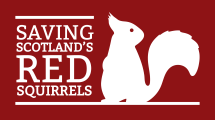Our Partners & Funders Saving Scotland’s Red Squirrels is led by the Scottish Wildlife Trust in partnership with NatureScot, Scottish Forestry, RSPB Scotland, Scottish Land & Estates, Forestry and Land Scotland, Loch Lomond & The Trossachs National Park Authority, and Aberdeen City Council. The project is supported by the Scottish Government’s Nature Restoration Fund, managed by NatureScot, along with project… […]
Read More…
…Saving Scotland’s Red Squirrels (SSRS) now moving into a new phase, the project is being restructured and partners are working on developing more sustainable, long-term solutions to deliver key actions for red squirrel conservation. The revision of the current Scottish Strategy is a hugely important step in steering effective conservation action for red squirrel over the coming years, and the… […]
Read More…
…the largest dedicated funder of the UK’s heritage, The National Lottery Heritage Fund’s vision is for heritage to be valued, cared for and sustained for everyone, now and in the future as set out in our strategic plan, Heritage 2033. Over the next ten years, we aim to invest £3.6billion raised for good causes by National Lottery players to bring… […]
Read More…
…in situ. Complete your Tetrad Data Sheets, including your volunteer hours and collected stickies, posting these in the addressed pre-paid envelope provided. If you have been storing bait, you are welcome to use this in your own garden. For any other equipment you have such as cameras and spray bottles, please keep hold of these for now. When Covid-19 restrictions… […]
Read More…
…Our hopes and aims for next phase are ambitious, but ones that we absolutely can realise with increased landscape-scale investment from partners, stakeholders, landowners, and local community involvement. We are incredibly grateful to everyone already involved in red squirrel conservation across the country and look forward to bringing more people and organisations onboard with this important and vital work.” Dr… […]
Read More…
…Saving Scotland’s Red Squirrels summarises the methods, achievements, challenges, and crucial lessons learned over the five-year nation-wide endeavour, and outlines recommendations to ensure a legacy of continued successful red squirrel conservation in Scotland into the future. The project aimed to find sustainable and affordable ways by which to halt the decline, and enable reestablishment in some areas, of Scotland’s red… […]
Read More…
…Ross Lochaline, Morvern Peninsula Plockton, Lochalsh, Wester Ross Reraig, Wester Ross Shieldaig, Wester Ross Spinningdale, Sutherland Highland release sites © Trees for Life Every spring and autumn, the Red Squirrel Reintroduction Project welcomes help from local volunteers to assist with baiting and translocations. Visit treesforlife.org.uk/about-us/red-squirrel-reintroduction-project to learn more about the project, and contact sarahw@treesforlife.org.uk to find out about local volunteer… […]
Read More…
…squirrel, which was first introduced from North America by people in the late 1800s. Grey squirrels also carry squirrelpox, a virus that doesn’t harm them but is deadly to reds. With the help of partners, landowners and local volunteers, the project is monitoring squirrel numbers across Scotland, managing the impact of squirrelpox, and helping to combat the spread of grey… […]
Read More…
…commercial conifers – to red squirrels. The researchers, together with Ulster Wildlife, bring into question red squirrel conservation strategies that focus on the planting of such forests. Scotland’s conifer forests In Scotland, non-native conifer forests are planted for commercial purposes. By the 1930s red squirrel populations were in serious decline in the UK, but the extensive conifer planting that… […]
Read More…
…is one of the remaining red squirrel strongholds in England. Working closely with the Lancashire Wildlife Trust and their Red Squirrel Project Officer, we carried out live-capture trapping to record population demographics (e.g. numbers of males/females, adults/juveniles, and breeding individuals), insert PIT tags (a type of microchip, similar to those used for pet cats and dogs, for identifying individuals), and… […]
Read More…
